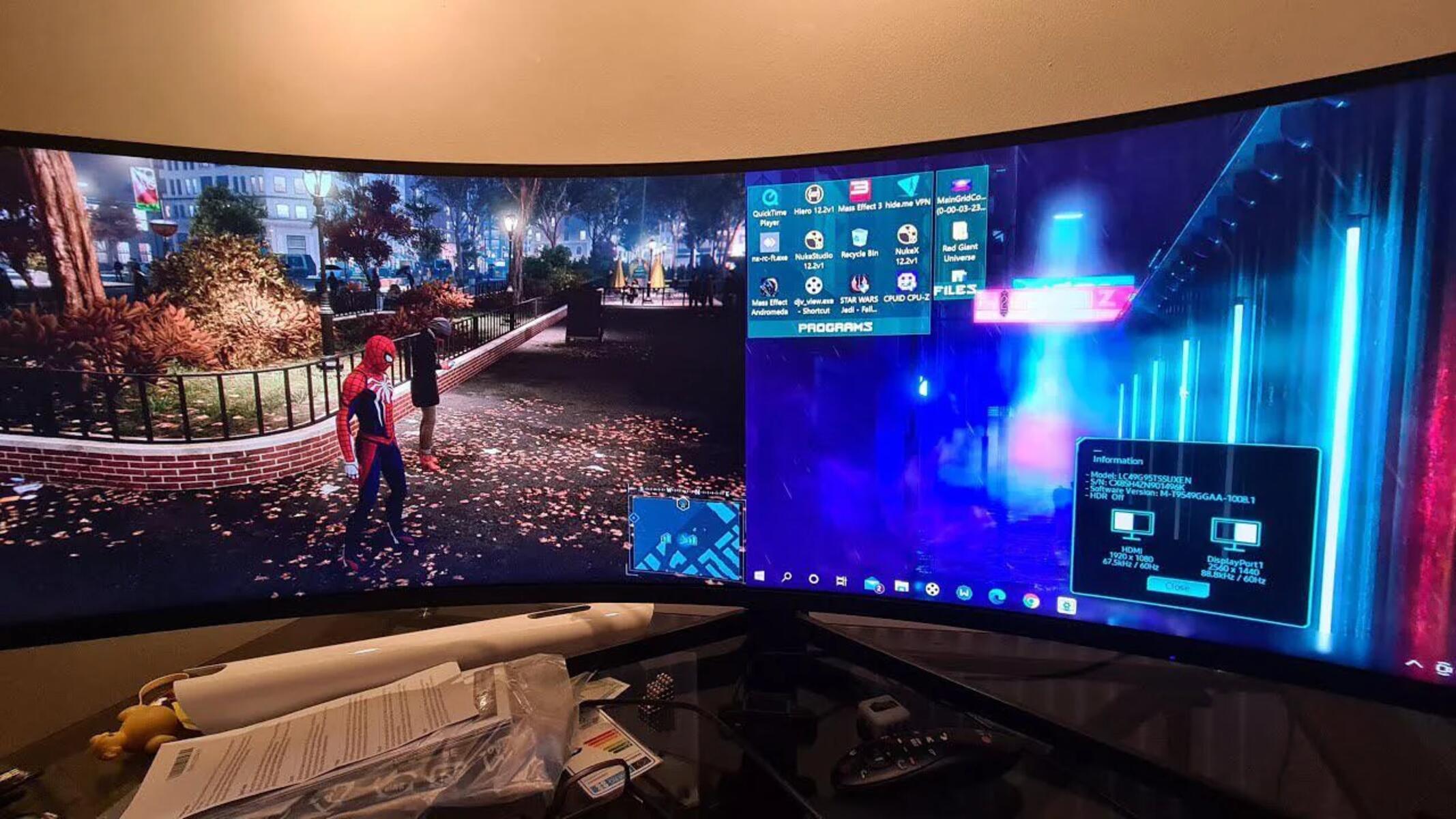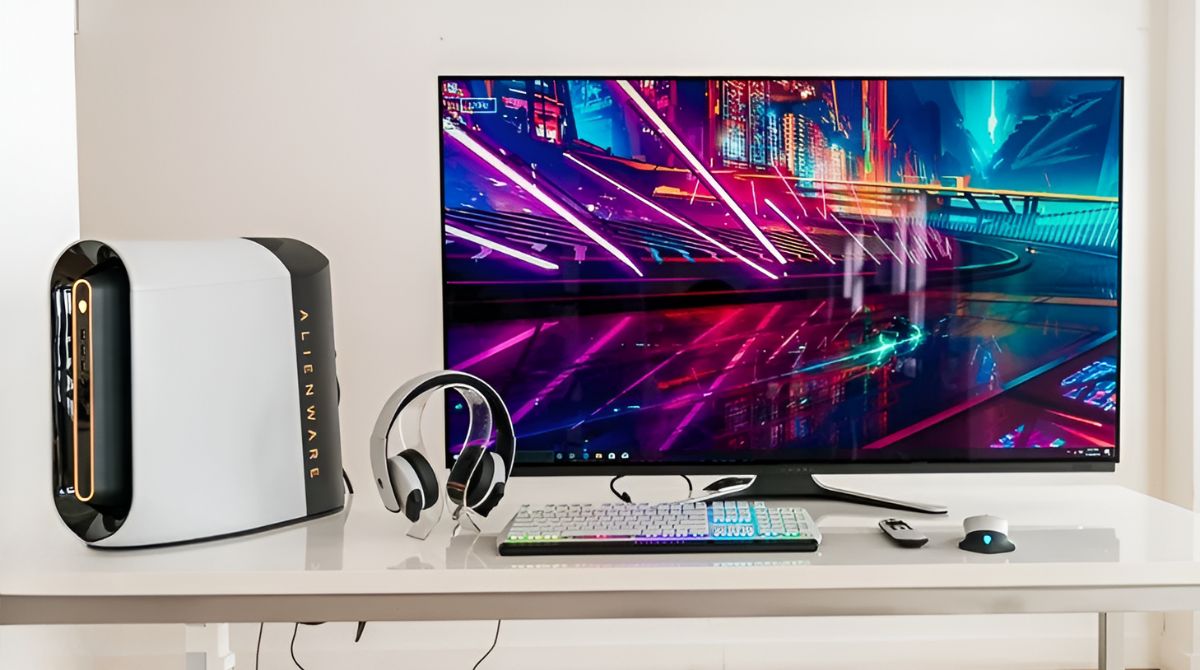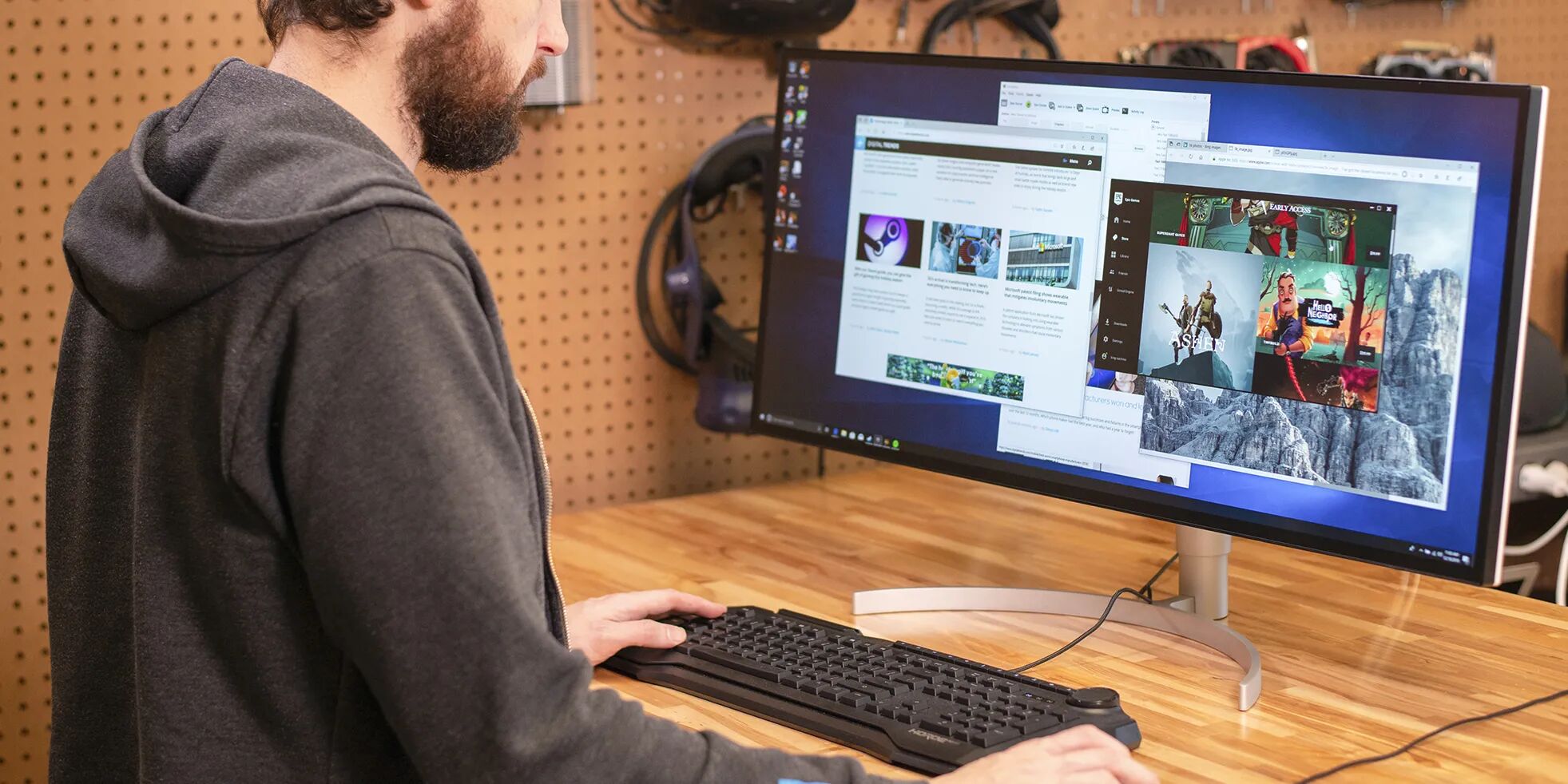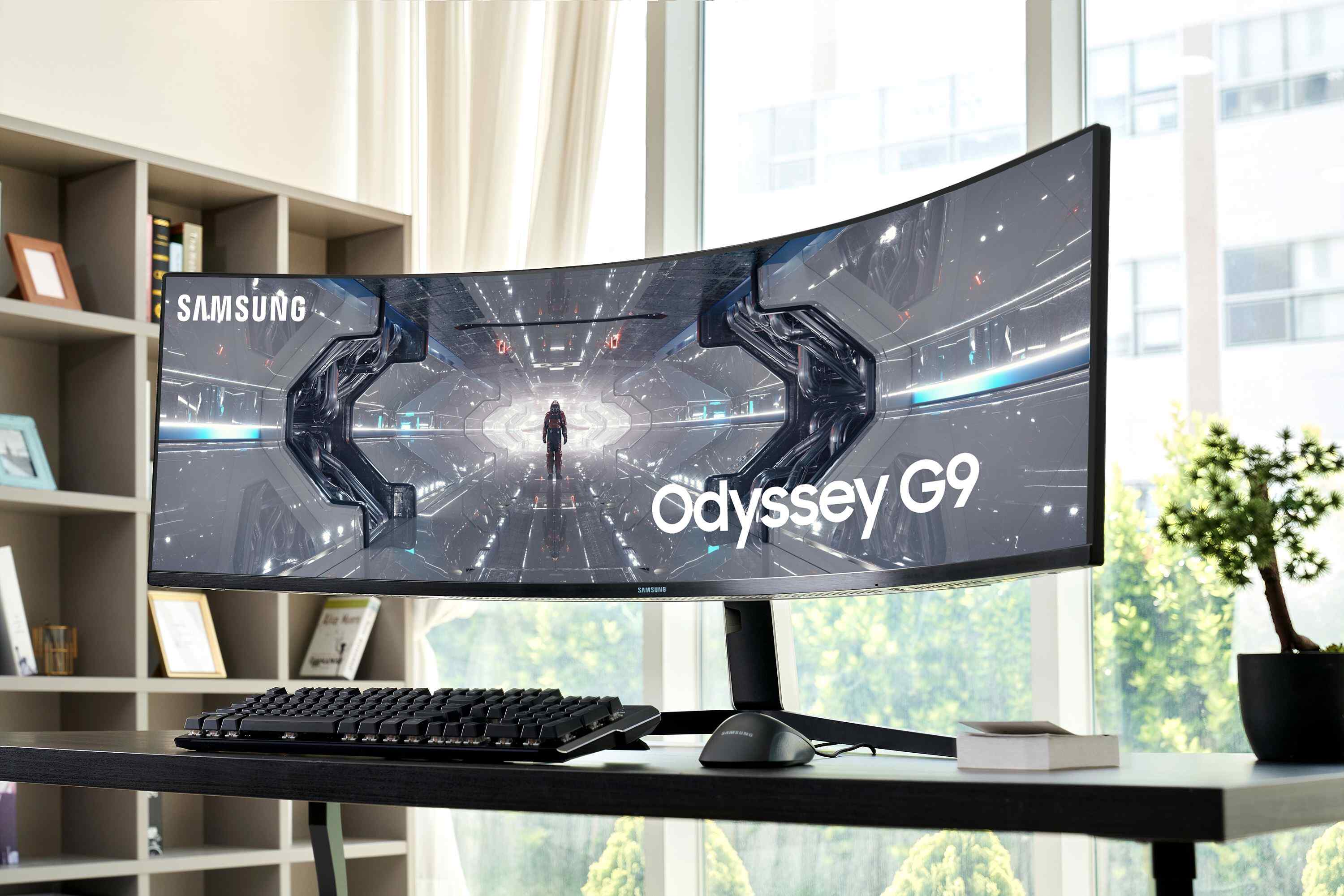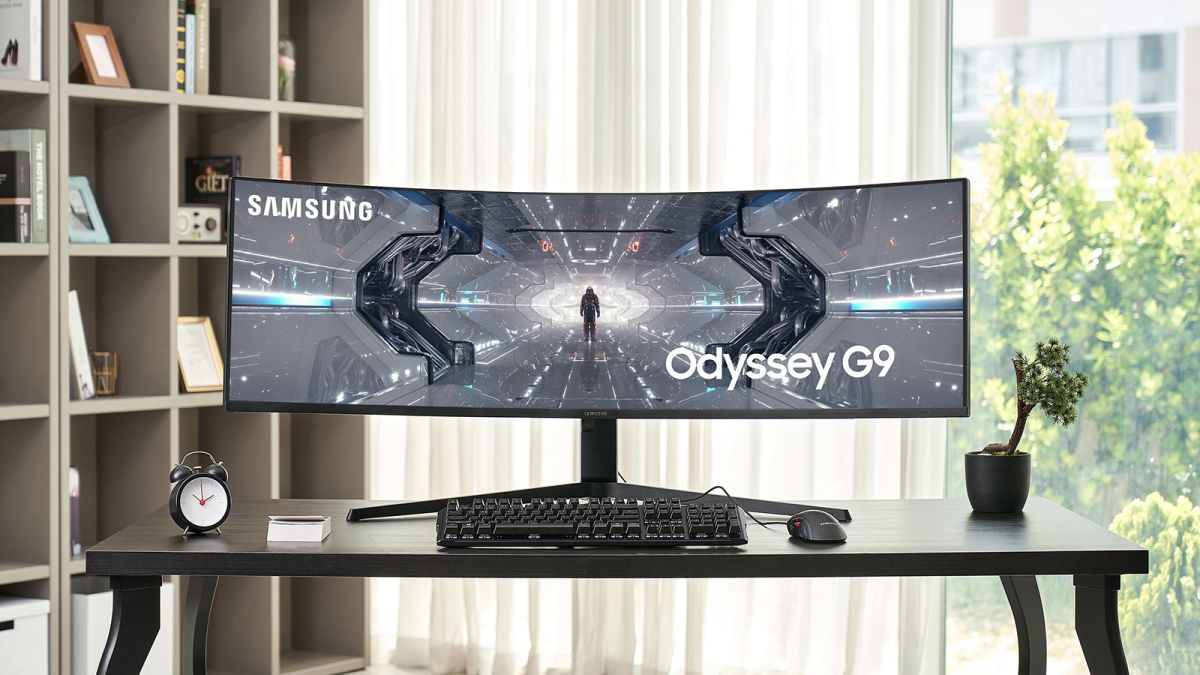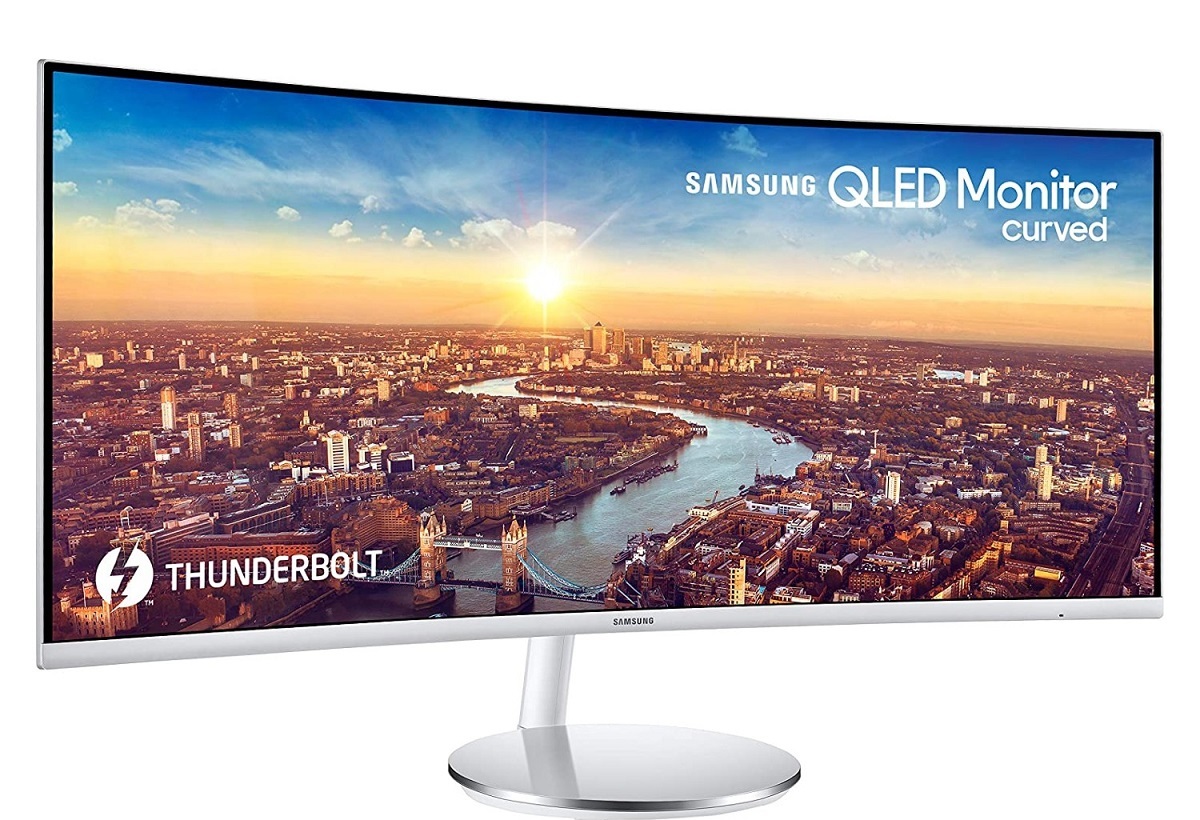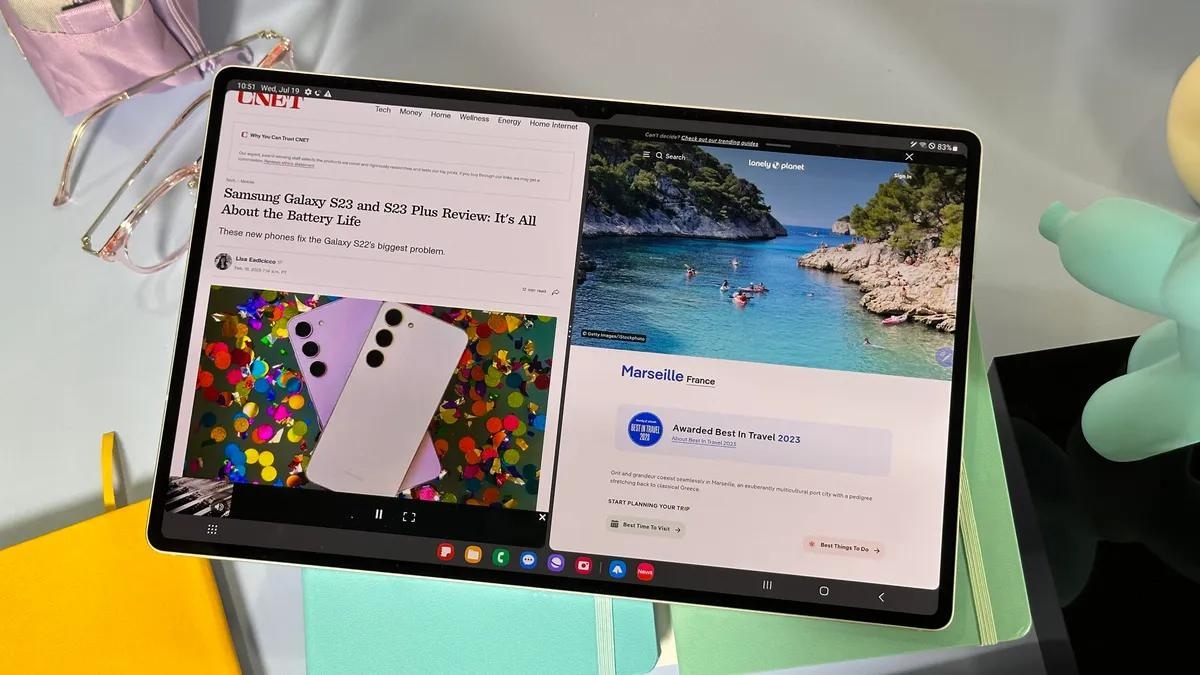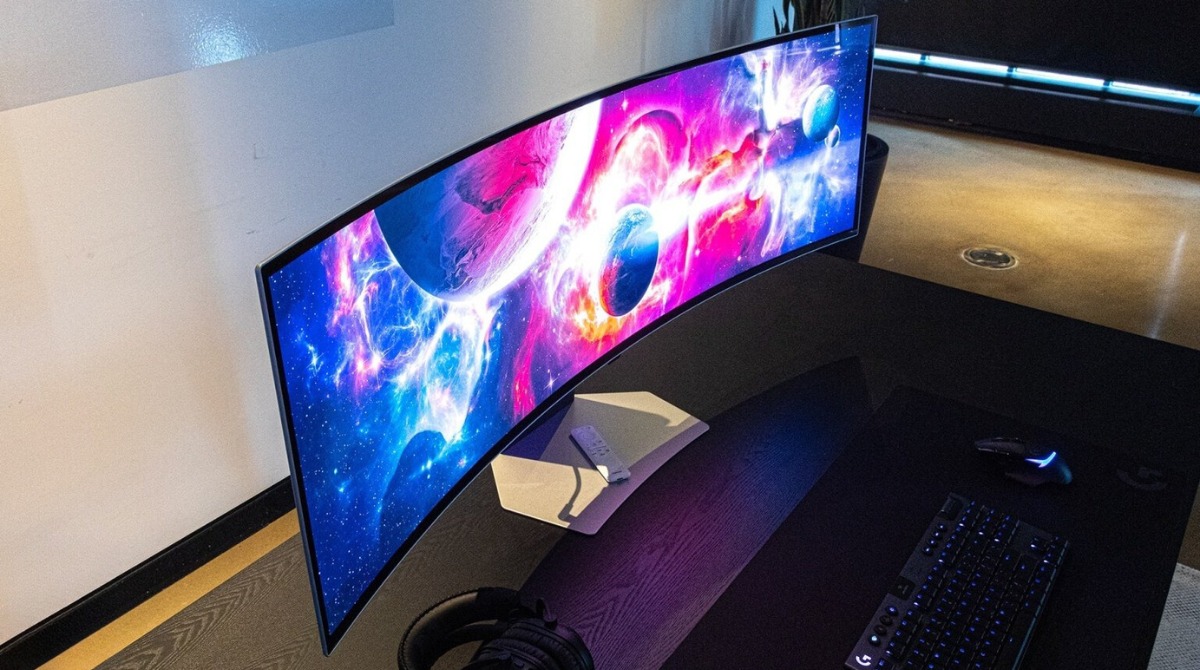Introduction
Samsung gaming monitors are a popular choice among gamers due to their exceptional display quality and advanced features. These monitors offer a whole new level of immersive gaming experience by delivering stunning visuals, faster refresh rates, and smoother gameplay. One standout feature that sets Samsung gaming monitors apart from the rest is the ability to split the screen.
Splitting the screen on a Samsung gaming monitor allows you to multitask and view multiple windows or applications simultaneously. This feature is particularly useful for gamers who want to keep an eye on their gameplay statistics, communicate with teammates, or even stream content while gaming. Whether you’re a casual gamer or a professional eSports player, being able to split the screen on your Samsung gaming monitor can greatly enhance your productivity and gaming experience.
By utilizing the screen splitting feature, you can have multiple windows or applications open side by side, eliminating the need to constantly switch between them. This can improve your workflow, as you can keep important information, such as gaming guides, chat applications, or videos, in view while staying focused on your gameplay.
In this article, we will explore the benefits of splitting the screen on Samsung gaming monitors and guide you through the various options available for this feature. We will also provide you with a step-by-step guide on how to split the screen on your Samsung gaming monitor, along with tips for adjusting screen split preferences and troubleshooting any issues that may arise.
So, whether you’re a seasoned gamer looking to optimize your gaming setup or a beginner exploring the possibilities of split-screen gaming, this article will equip you with the knowledge you need to make the most of this feature on your Samsung gaming monitor.
Understanding Samsung Gaming Monitors
Samsung gaming monitors are specifically designed to meet the needs of gamers, offering unparalleled visual and performance enhancements. These monitors incorporate cutting-edge display technologies, advanced gaming features, and ergonomic designs to deliver an exceptional gaming experience.
One key aspect of understanding Samsung gaming monitors is their display quality. These monitors boast high-resolution screens that provide crystal-clear images and vibrant colors. With technologies like Quantum Dot and HDR (High Dynamic Range), Samsung gaming monitors can reproduce a wide color gamut and achieve deeper blacks and brighter whites, resulting in more immersive and realistic visuals.
Another critical feature of Samsung gaming monitors is their fast refresh rates and response times. A higher refresh rate ensures smoother motion and reduces the chances of motion blur, while a faster response time minimizes the delay between your input and the display’s reaction. Samsung gaming monitors typically offer refresh rates of 144Hz or higher, delivering smooth and responsive gameplay that is crucial for competitive gaming.
In addition to display quality, Samsung gaming monitors also come equipped with gaming-specific features to enhance the gaming experience. These features may include variable refresh rate technology, such as AMD FreeSync or NVIDIA G-Sync, which syncs the monitor’s refresh rate with the graphics card’s output to eliminate screen tearing and stuttering.
Ergonomics is another important aspect of understanding Samsung gaming monitors. These monitors are designed with adjustable stands that enable you to find the most comfortable viewing position. They often include features like tilt, swivel, and height adjustments, allowing you to position the monitor according to your preferences and reduce strain on your neck and eyes during long gaming sessions.
Connectivity options are also worth considering when it comes to Samsung gaming monitors. These monitors typically offer multiple video inputs like HDMI and DisplayPort, enabling you to connect various gaming devices simultaneously, such as gaming consoles, PCs, and laptops. Some models even come with built-in USB hubs, making it easy to connect peripherals and accessories.
Understanding the features and capabilities of Samsung gaming monitors is essential for selecting the right monitor that suits your gaming preferences and requirements. By having a clear understanding of what these monitors offer, you can make an informed decision and enjoy the advantages they bring to your gaming setup.
Benefits of Splitting the Screen
The ability to split the screen on a Samsung gaming monitor offers numerous benefits that can greatly enhance your gaming experience and productivity. Here are some key advantages of utilizing the screen splitting feature:
- Multi-tasking: Splitting the screen allows you to multitask efficiently. You can have multiple applications or windows open side by side, eliminating the need to constantly switch between them. For example, you can keep a game running on one side of the screen while having a web browser, chat application, or streaming software open on the other side.
- Enhanced Gameplay: Splitting the screen can provide valuable information during gameplay. You can keep an eye on in-game statistics, monitoring your character’s health, ammo count, or performance metrics without interrupting your gameplay. This allows for better decision-making and strategic planning as you can quickly glance at important information without losing focus on the game.
- Productivity Boost: Splitting the screen can significantly enhance your productivity. You can work on one side of the screen while having reference materials, communication tools, or research documents open on the other side. This is especially useful for content creators, streamers, or professionals who need to access multiple resources simultaneously.
- Flexible Content Consumption: With the screen splitting feature, you can watch videos, live streams, or tutorials while gaming. You can allocate part of the screen to video playback without interrupting your gaming session. This allows you to learn new strategies, watch gameplay guides, or enjoy entertainment content without sacrificing your gaming time.
- Improved Collaboration: Splitting the screen is beneficial for gamers who collaborate with teammates while playing multiplayer games. You can communicate through chat applications, video call software, or voice chat platforms while keeping the game visible. This fosters better team coordination, strategizing, and overall gaming performance.
By leveraging the screen splitting feature on your Samsung gaming monitor, you can optimize multitasking, increase productivity, and enhance your gaming experience. Whether you’re a gamer, content creator, or professional, splitting the screen provides a practical and efficient way to manage multiple applications and tasks simultaneously.
Available Options for Splitting the Screen
Samsung gaming monitors offer various options for splitting the screen, catering to different multitasking needs and preferences. Here are some of the common screen splitting options you can find on these monitors:
- Split Screen Mode: Samsung gaming monitors often come with a built-in Split Screen mode that allows you to divide the screen into two or more sections. You can choose from pre-defined layouts, such as a vertical split or a 2×2 grid, depending on how many windows you want to display simultaneously. This mode is straightforward to use and provides quick access to split-screen functionality.
- Picture-by-Picture (PBP): The Picture-by-Picture feature on Samsung gaming monitors allows you to connect multiple input sources and display the content from each source in separate sections of the screen. This is particularly useful if you want to connect multiple devices, such as a gaming console and a PC, and view both inputs side by side. PBP mode provides flexibility and customization options, enabling you to adjust the size and position of each input’s window.
- Picture-in-Picture (PIP): Picture-in-Picture is another option available on Samsung gaming monitors. With PIP mode, you can display a smaller window within the main screen, overlaying it on top of your primary window. This is useful for tasks like monitoring a secondary source while focusing on a primary task. For example, you can have a video playing in the PIP window while working or gaming on the main screen.
- Ultra-Wide Displays: Some Samsung gaming monitors are ultra-wide displays with an aspect ratio of 21:9 or wider. These monitors provide ample horizontal screen space, allowing you to effectively split the screen without the need for additional software or settings. You can have multiple windows or applications open side by side, customized to fit your preferences.
- Additional Software: There are also third-party software solutions available that offer more advanced screen splitting options for Samsung gaming monitors. These software applications provide additional customization and flexibility, allowing you to create custom layouts, resize windows, and configure shortcuts to easily switch between different screen arrangements. Examples of such software include DisplayFusion, AquaSnap, and PowerToys for Windows 10.
Exploring and utilizing these screen splitting options can help you find the most suitable configuration for your multitasking needs. Whether you prefer a divided screen, multiple input sources, or overlay windows, Samsung gaming monitors offer a range of features and options to enhance your productivity and gaming experience.
Step-by-Step Guide on How to Split the Screen on Samsung Gaming Monitor
Splitting the screen on your Samsung gaming monitor is a straightforward process. Follow these step-by-step instructions to make the most of this feature:
- Check your Monitor’s User Manual: Start by referring to your monitor’s user manual or online documentation. Different Samsung gaming monitors may have specific instructions or dedicated buttons for accessing the screen splitting feature. Familiarize yourself with the specific model’s functionality and any unique steps required.
- Access the Menu: Using the buttons or controls on your Samsung gaming monitor, access the menu. The specific button location and labeling may vary depending on the model, but it is usually marked with a gear icon or labeled as “Menu.”
- Navigate to the Screen Splitting Options: Within the menu, navigate to the screen splitting options. Look for sections labeled “Screen Split,” “Picture-by-Picture,” or “Picture-in-Picture.” Select the desired option to proceed.
- Select the Split Screen Layout: If you are using the built-in split screen mode, you will be presented with a selection of layout options. Choose the layout that suits your needs, such as a vertical split or a 2×2 grid. Use the arrow buttons or controls on your monitor to navigate and select the desired layout.
- Adjust the Window Sizes (if applicable): If your monitor allows customization of window sizes in split screen mode, use the controls provided to adjust the sizes of the windows. You can typically use arrow keys, buttons, or controls to resize the windows as per your preference.
- Adjust the Window Position (if applicable): In some cases, you can also move the windows to different positions on the screen. Use the controls or buttons provided to shift the windows around and arrange them according to your requirements.
- Confirm and Save the Settings: Once you are satisfied with the screen splitting configuration, confirm and save the settings. This will lock in your chosen layout and window sizes, allowing you to switch between them easily in the future.
- Test and Customize: After saving the settings, test the split screen configuration to ensure it meets your needs. If necessary, revisit the menu and make further adjustments to window sizes, positions, or layout options until you achieve your desired setup.
Following these steps will enable you to effectively split the screen on your Samsung gaming monitor, enhancing your multitasking capabilities and optimizing your gaming experience. Remember to consult your monitor’s user manual for any model-specific instructions or additional details.
Adjusting Screen Split Preferences
Once you have enabled the screen split feature on your Samsung gaming monitor, you may want to further customize and adjust the preferences to suit your specific needs and workflow. Here are some key considerations for adjusting screen split preferences:
- Window Size: Depending on the screen splitting mode or software you are using, you may have the option to adjust the window sizes. Find the controls or settings that allow you to resize the windows and make them larger or smaller according to your preference. This customization allows you to allocate more screen space to applications or content that require more visibility or reduce the size of less essential windows.
- Window Position: In addition to adjusting the window sizes, you can also modify the position of the split windows on the screen. Some screen splitting modes or software provide the ability to drag and drop windows to different positions, reordering them as needed. This flexibility allows you to arrange the windows in a way that maximizes your productivity and visual comfort.
- Shortcut Keys: Check if your Samsung gaming monitor or the software you are using for screen splitting supports shortcut keys. Shortcut keys enable you to quickly switch between different screen configurations without navigating through menus or settings. This feature can save you time and make it easier to adapt to different tasks or workflow changes on the fly.
- Aspect Ratio: If you are using an ultra-wide Samsung gaming monitor, you may have the option to adjust the aspect ratio of the split screens. Depending on your preferences, you can choose to have equally sized windows or allocate more screen space to a particular window while adjusting others accordingly. Customizing the aspect ratio can help you optimize the layout and make the most efficient use of the available screen real estate.
- Monitor Calibration: It is essential to ensure that each split screen window appears correctly calibrated and color accurate. Some monitors provide individual calibration settings for each split window, enabling you to fine-tune the display properties. Adjusting settings such as brightness, contrast, and color balance can help you maintain visual consistency across the split screens and prevent any distortion or color mismatch.
By exploring and adjusting these screen split preferences, you can personalize your multitasking setup on your Samsung gaming monitor. Take the time to experiment with different configurations and settings until you find the optimal arrangement that improves your productivity and enhances your overall gaming experience.
Troubleshooting Split Screen Issues
While splitting the screen on your Samsung gaming monitor can greatly enhance your multitasking capabilities, you may encounter some common issues or challenges. Here are a few troubleshooting tips to help you overcome potential split screen issues:
- Aspect Ratio Mismatch: If you notice that the content in one window appears distorted or stretched, it may be due to an aspect ratio mismatch. Ensure that the aspect ratio of the content matches the aspect ratio of the split window. Adjust the settings or resize the window to maintain the correct aspect ratio for a proper display.
- Display Resolution Issues: In some cases, you may experience resolution-related problems when splitting the screen. Ensure that the resolution settings of your monitor are compatible with the content you are displaying in each split window. Adjust the display resolution or check the compatibility settings to resolve any resolution issues.
- Software Compatibility: If you are using third-party software for split screen functionality, ensure that it is compatible with your operating system and monitor. Sometimes, certain software may not work correctly or may cause conflicts, leading to issues like freezing, lag, or window resizing problems. Check for any software updates or consult the software’s documentation for troubleshooting advice.
- Hardware Limitations: It is important to consider the hardware limitations of your Samsung gaming monitor when splitting the screen. Keep in mind that splitting the screen requires additional processing power and resources, which may impact overall performance. If you experience performance issues or decreased frame rates, consider closing any unnecessary background applications or reduce the number of split windows to alleviate the strain on your hardware.
- Monitor Firmware Updates: Check if there are any firmware updates available for your Samsung gaming monitor. Firmware updates can often address bugs, improve compatibility, and resolve specific issues related to screen splitting. Visit the manufacturer’s website or refer to the documentation for instructions on how to update the monitor’s firmware.
By troubleshooting these common split screen issues, you can ensure a smooth and hassle-free experience when utilizing this feature on your Samsung gaming monitor. If you encounter persistent problems or issues that cannot be resolved, it is recommended to reach out to the manufacturer’s customer support for further assistance.
Conclusion
Samsung gaming monitors offer a range of features that elevate the gaming experience, and the ability to split the screen is a standout feature among them. By dividing the screen into multiple windows, gamers can multitask, access important information, and collaborate with teammates without interrupting their gameplay. Furthermore, splitting the screen offers benefits beyond gaming, allowing users to increase productivity, watch videos, and customize their workflow.
We discussed the various options available for splitting the screen on Samsung gaming monitors, including built-in split screen modes, Picture-by-Picture (PBP), and Picture-in-Picture (PIP) features. Each option provides unique advantages, such as customizable layouts, simultaneous display of multiple input sources, and the ability to overlay windows for efficient multitasking.
To split the screen on a Samsung gaming monitor, follow our step-by-step guide, adjusting the settings to suit your preferences. Additionally, consider adjusting preferences like window size, position, shortcut keys, aspect ratio, and monitor calibration to optimize your multitasking experience.
If you encounter any issues with split screen functionality, we provided troubleshooting tips, including checking for aspect ratio mismatches, resolving display resolution problems, ensuring software compatibility, considering hardware limitations, and updating the monitor firmware if necessary.
In conclusion, utilizing the screen splitting feature on your Samsung gaming monitor can significantly enhance your productivity, gaming experience, and multitasking capabilities. With multiple windows or applications at your disposal and the ability to customize the screen layout, you can streamline your workflow, access essential information, collaborate, and enjoy uninterrupted gameplay. So, make the most of your Samsung gaming monitor’s screen splitting feature and unlock a new level of efficiency and convenience in your gaming and day-to-day tasks.







